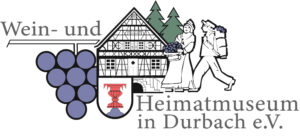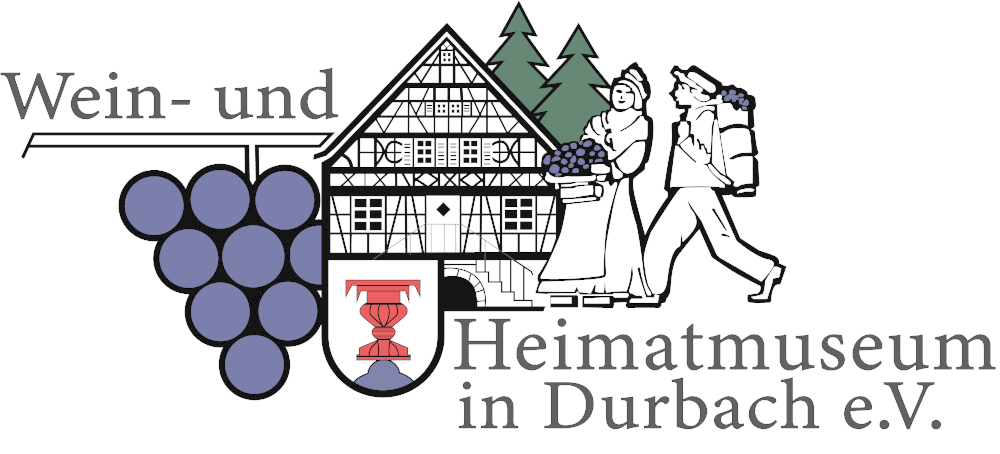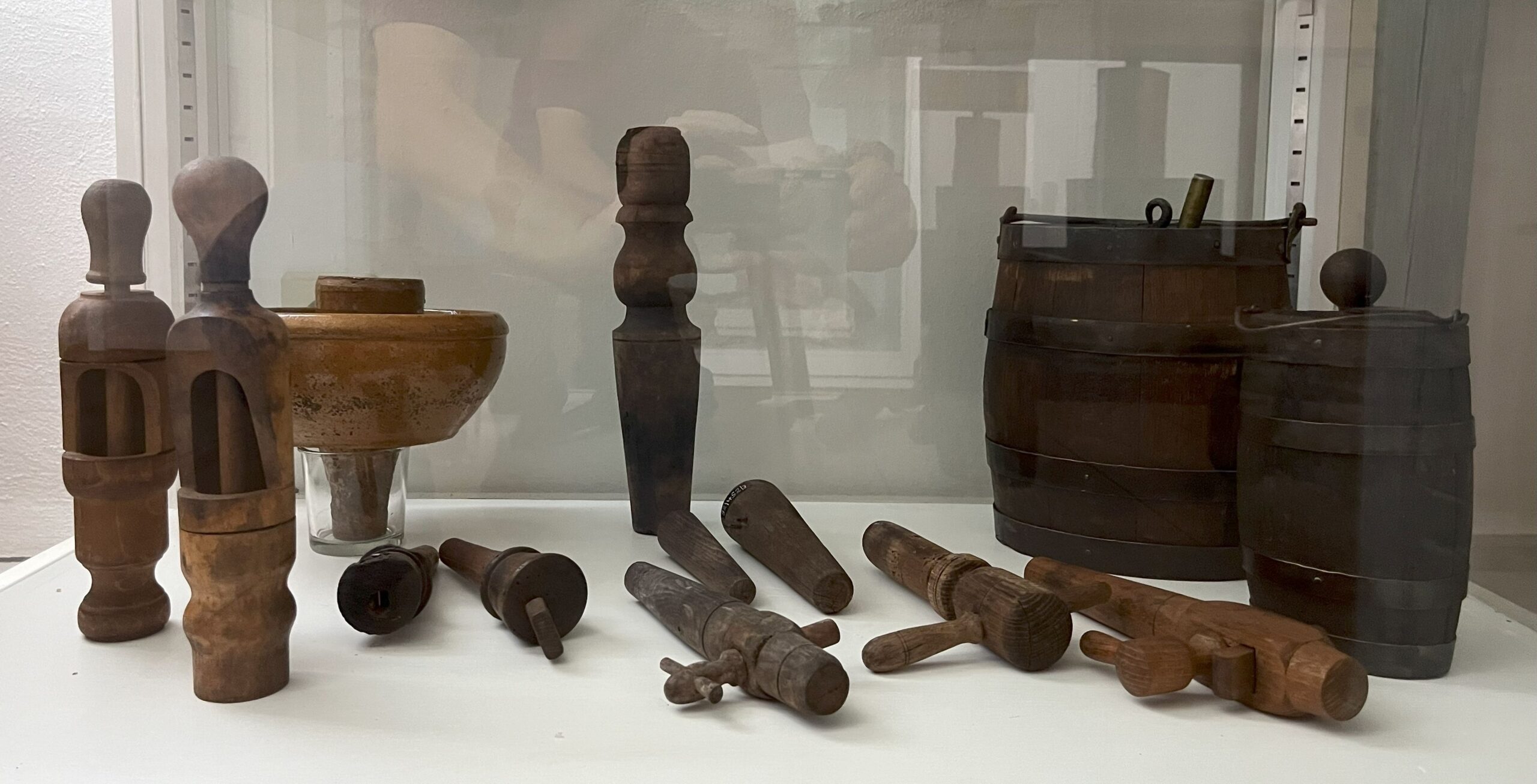216 History of viticulture
Durbach was contemplating wine advertisement early on, which is illustrated by this brilliant price list from early 1900. It is originally from the former winery Weiß, that is now Winfried Laible, Hatsbach. Weiß was also a wine store in Karlsruhe, which is why there is not only wine from Durbach on the map.
In the display case, we see a wonderfully carved old barrel bar as well as the old driver pistol of the field keeper as he can still be seen in an advertising film of the Durbach vintners from 1928. Next to it you can see two silver scales (real silver), these are oechsle scales as they were used to measure the degrees of oechsle (grape sugar content). Nowadays modern refractometers are used.
Next to it, we see a schnapps scale and a mash scale. A particularly rare and valuable piece is the hydrometer, with which the alcohol content can be determined via the density of the liquid. You will find a detailed description of this below under “More information”.
The large cabinet houses proper rarities and treasures. Drinking glasses, carafes, Schnapsbuddel, i.e., schnapps bottles. The oldest piece comes from early 1700 and is therefore particularly valuable. Corkscrews in all shapes were always part of wine culture. The “Ratsherrenwein” was produced in own production between 1986 and 1989 (begin of the land consolidation). The municipal council was cultivating parts of two vineyard parcels on the extremely steep slopes of the Ölberg. The wine was used for representation purposes and otherwise distributed among councilmen.
The lower part houses an old Gärkachel, the top piece used during fermentation, Fasshahnen, a tap to release the wine and Rieberle, a basic hand bottle corker, a Weinlogele, a wooden container to bring wine or must to the field/vines, as well as a Schnapslogele.



